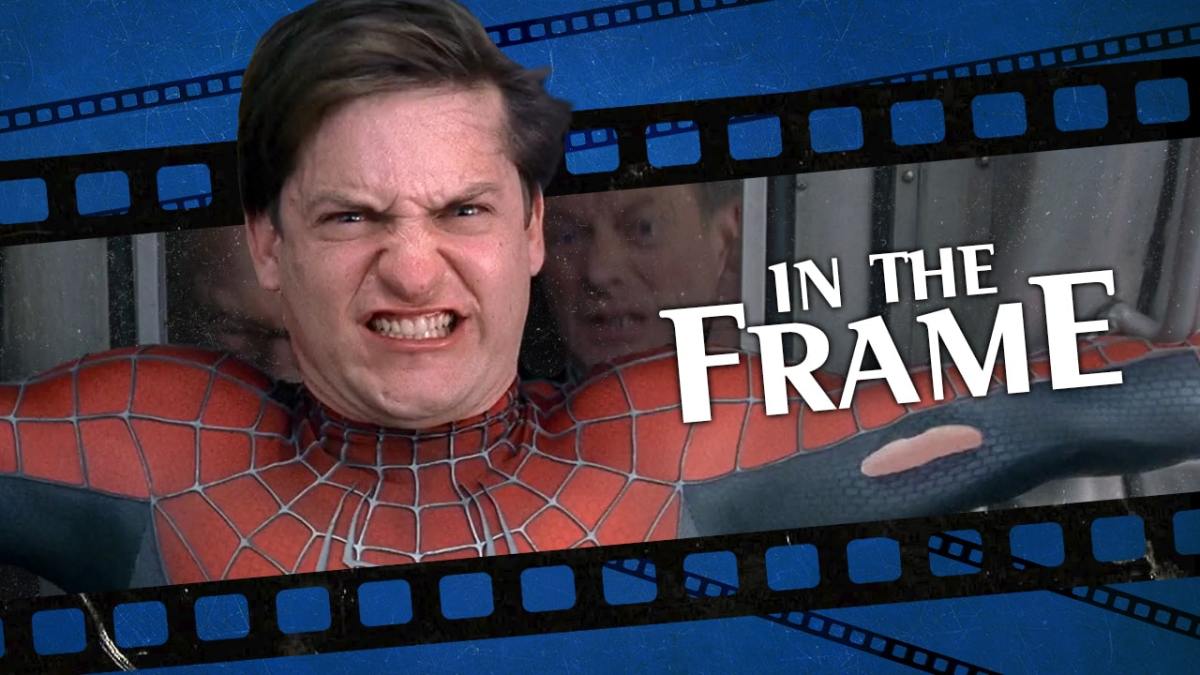After months of speculation, Sam Raimi has officially confirmed that he will take over the directorial reins on Doctor Strange and the Multiverse of Madness from Scott Derrickson. So it seems a perfect opportunity to revisit Raimi’s last major contribution to the superhero genre. Superhero movies have come a long way since Sam Raimi’s Spider-Man trilogy – not always in the right direction.
Sam Raimi’s Spider-Man films might have helped make the Marvel Cinematic Universe (MCU) possible, but they are an entirely different breed of film. They exist at a nexus point between the blockbusters of the 1990s and modern superhero cinema. There’s quite a lot of Richard Donner’s Superman in them, and even some of Tim Burton’s Batman, although they place a lot more emphasis on comic book fidelity.
That said, Raimi’s films still enjoyed the sort of creative freedom associated with those earlier adaptations. It’s hard to imagine a modern superhero film making as dramatic a departure from the “canon” as the movie’s “Green Goblin” costume. Even at the time, having Peter (Tobey Maguire) generate webbing organically (rather than designing mechanical web shooters) was controversial to some fans.
In terms of feeling dated, Spider-Man works hard to sell its tie-in soundtrack album. Macy Gray appears at the “Unity Day Festival,” singing “My Nutmeg Phantasy.” Spidey even opens the video to Nickelback’s “Hero.” These sorts of tie-in albums don’t really exist anymore; the rare exceptions are either throwbacks (like Charlie’s Angels) or almost concept albums (like Black Panther).
These might seem superficial differences, but they are striking in an era where some fans believe that Marvel Studios’ template is the only viable way to make a superhero blockbuster. This was the subtext when fans campaigned to “save” Spider-Man from Sony when it appeared that the hero might have to leave the MCU after negotiations between Disney and Sony broke down.
This is a short-sighted perspective because there’s actually a lot that modern superhero films could learn from Sam Raimi’s Spider-Man films. For all the criticisms about how Raimi’s films might depart from the established comic book lore, it is very clear that Raimi harbors a lot of affection for those classic comics. His Spider-Man trilogy is a love letter to Stan Lee and John Romita Sr.
This is obvious, even at a visual level. The opening credits to Spider-Man 2 recap the events of the previous film, using artwork from comics legend Alex Ross. At another point, Raimi recreates an iconic splash page from Amazing Spider-Man #50. These sorts of visual references and homages are quite common in modern blockbusters, but it runs deeper than that.
Raimi dares to make his Spider-Man films look like a comic book. Along with cinematographers Don Burgess and Bill Pope, Raimi consciously turns up the saturation. He shades characters in strong and vibrant colors; consider Kirsten Dunst as Mary Jane, with her vibrant red hair against the deep green of her sweater and soft purple of her shirt. She’s a comic character brought to life.
There’s a heightened reality to Raimi’s Spider-Man films, standing in marked contrast to the drab cinematography of a lot of modern superhero films. Peter Parker’s rooftop adventures juxtapose the redbricks of New York against clear blue skies. Raimi’s films shoot on studio backlots and stylized sets, eschewing verisimilitude for the primary colors and strong angles of a comic book.
This aesthetic extends beyond visual flourishes. Danny Elfman’s score is strong and distinctive, miles away from his blander work on later superhero films like Age of Ultron. Raimi’s directorial choices are similarly heightened, most notably in his supervillain origin scenes that play like sequences from monster movies, populated by crash zooms, expressionist framing, and loud performances.

Aside from exceptions like Thor: Ragnarok and Guardians of the Galaxy, Marvel Studios has largely pushed its films towards what might be termed “a uniform, house-style look.” In contrast, Raimi’s films look distinct and unique. Spider-Man: Far from Home proved that the MCU could never conceive of anything as beautiful and striking as J.K. Simmons wearing J. Jonah Jameson’s straight-from-the-comics hair.
Raimi’s Spider-Man films are unashamed to be goofy and silly. Willem Dafoe has boasted about how much he enjoyed playing the Green Goblin, and it’s easy to see why – the character cheerfully munches on the scenery, delivering lines like, “We’ll meet again, Spider-Man!” and “… there’s only one who can stop us!” It’s campy, but there’s nothing inherently wrong with campy.
These are stories about larger-than-life figures, characters playing out soap operas in primary colors. It’s frustrating how many modern superhero movies hide behind irony and self-awareness, as if nervous that they might not be taken seriously if they embrace the earnest goofiness and heightened reality of their source material.
The MCU protectively insists it’s better to be laughed with than to risk being laughed at. This defensiveness creates a barrier between the audience and the film. It is hard to take any of the stakes seriously when characters punctuate scenes with wry one-liners. In Civil War, why should the audience care about the spectacle of friends fighting one another if Hawkeye (Jeremy Renner) and Black Widow (Scarlett Johansson) don’t?
Raimi’s refusal to dilute the silliness of the source material with irony lends his films a compelling sincerity. The biggest moral dilemma in the original Spider-Man is whether Peter will become an asshole in his efforts to buy a car to impress Mary Jane. The opening action sequence in Spider-Man 2 hinges on whether Peter can deliver pizzas across town quickly enough to avoid getting fired.

These are very mundane stakes, far removed from the threatened destruction of Earth in Doctor Strange or galactic genocide in Guardians of the Galaxy Vol. 2. As the MCU has evolved, it has become increasingly disconnected from the affairs of regular people. This is most obvious in the films’ abandonment of the trope of the secret identity. These are no longer even human beings.
However, Raimi’s Spider-Man films understand that the key to the appeal of characters like Peter Parker comes from elevating these low-stakes personal crises to outright superhero melodrama. Raimi’s trilogy is invested in the question of what it means for Peter to be a good man, the idea that to be truly heroic he has to give up the things that he personally desires.
“Am I not supposed to have what I want?” Peter asks. “What I need?” There’s a sense watching these films that being a good person takes effort. It isn’t cool or glamorous. It is hard work and involves constant sacrifice. Peter sums it up at the climax of Spider-Man 2: “Sometimes, to do what’s right, we have to be steady and give up the things we desire the most, even our dreams.”
It’s a very unironic sentiment, and Raimi leans into it. Mary Jane performs on Broadway in The Importance of Being Earnest, a message that the films take to heart. Spider-Man 2 features a pair of pop music montages following Peter’s day, set to Jet’s “Hold On” and B.J. Thomas’ “Raindrops Keep Fallin’ on My Head.” It’s difficult to imagine similar sequences in any MCU film.

The MCU is largely built around the idea that it is awesome to be a superhero, and that the power fantasy is an end unto itself. This is obvious even in the two most recent Spider-Man films. In both, Peter Parker (Tom Holland) is given hyper-advanced (and highly lethal) technology by Tony Stark (Robert Downey Jr.), only to lose it and then have to win it back. The assumption is that he deserves that technology and he should have it.
Too often, MCU films are about power without responsibility. Tony Stark and Bruce Banner (Mark Ruffalo) create a robot that almost destroys the world in Age of Ultron, then fix it by doing exactly the same thing again. Neither faces consequences for the ensuing mass murder. Steve Rogers (Chris Evans) spends Civil War insisting that neither he nor his friend Bucky Barnes (Sebastian Stan) should be held accountable by the authorities.
Spider-Man has been rebooted twice since the Sam Raimi trilogy. There’s been some debate about whether audiences need to see his origin yet again, something gleefully spoofed by Spider-Man: Into the Spider-Verse. Dialogue suggests that Uncle Ben did exist in the MCU and he was a key influence on Peter Parker, even if Tony Stark has taken up a lot of his narrative role.
Revisiting Sam Raimi’s Spider-Man trilogy, a lot of the superhero movies in the years since could use a refresher on Uncle Ben’s words of wisdom: “With great power comes great responsibility.”






Published: Apr 20, 2020 11:00 am